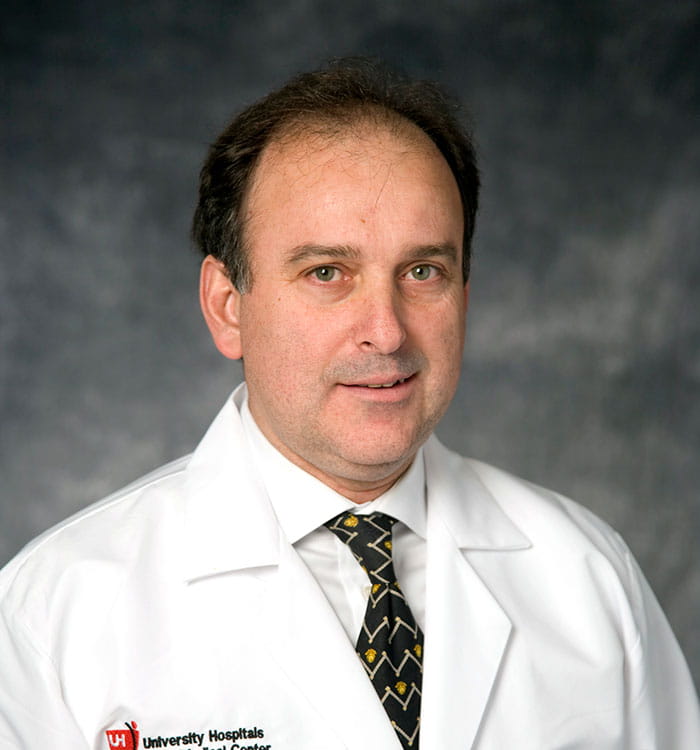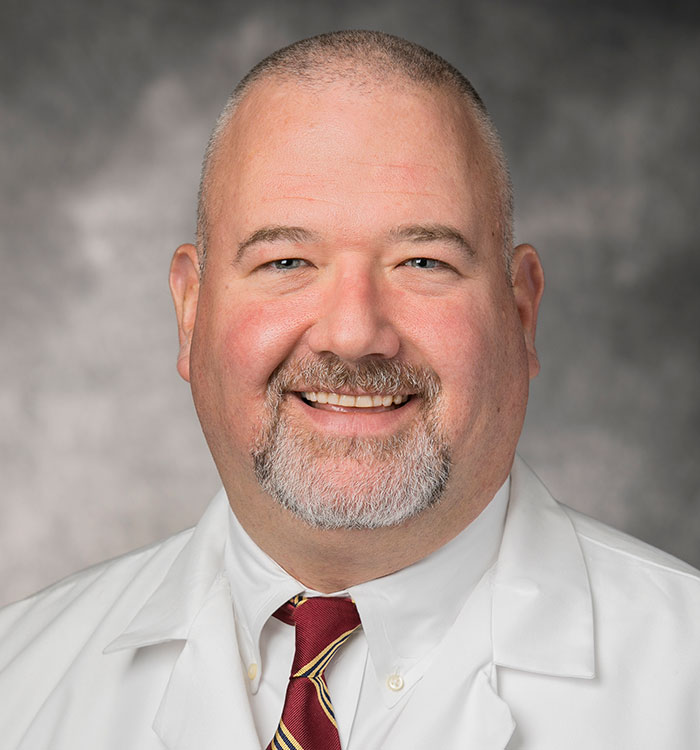Optimizing Cardiac Outcomes with a Minimalist Approach
February 04, 2019
Physicians at UH Harrington Heart & Vascular Institute take steps to optimize left atrial appendage closure with a focus on patient safety
Innovations in Cardiovascular Medicine & Surgery - Winter 2019
The quest to provide world-class healthcare depends on balancing a delicate equation of patient safety, innovative care delivery and resource utilization. To that end, physicians at University Hospitals Harrington Heart & Vascular Institute are reshaping the care paradigm for a growing atrial fibrillation (AFib) population while significantly expediting workflow, reducing potential risks and improving patient comfort.
 Mauricio S. Arruda, MD
Mauricio S. Arruda, MD Hiram G. Bezerra, MD, PhD
Hiram G. Bezerra, MD, PhD Brian C. Fitzsimons, MD
Brian C. Fitzsimons, MDIt is estimated that between 2.7 and 6.1 million people in the United States experience AFib, increasing their risk of stroke fivefold. Many of these patients are prescribed an anticoagulation drug such as warfarin to reduce clotting, but dangerous bleeding can occur. For people with non-valvular AFib, an effective surgical alternative to long-term anticoagulation therapy is left atrial appendage (LAA) closure using an appropriate device such as WATCHMAN. However, performing the procedure under general anesthesia limits the number of cases that can be completed in a given day.
“Atrial fibrillation is extremely prevalent,” says Hiram G. Bezerra, MD, PhD, Director of Coronary Intervention & Circulatory Support at UH Harrington Heart & Vascular Institute and Associate Professor of Medicine, Case Western Reserve University School of Medicine. “As we anticipated that demand for left atrial appendage closure would grow, we looked for ways to reduce bottlenecks in terms of anesthesia time and resource planning.”
OPTIMAL PROCEDURAL PLANNING AND MODERATE SEDATION
Harnessing the advanced resolution capabilities of cardiac computed tomography angiography (CCTA) scanners, Dr. Bezerra and his colleagues saw an opportunity to eliminate the need for general anesthesia for the majority of AFib patients.
Performed in a hybrid catheterization lab using a standard transseptal technique, LAA closure has traditionally required a real-time transesophageal echocardiogram (TEE) using an adult probe to visualize and measure the LAA. Thanks to enhanced pre-op imaging, that is no longer necessary.
“CTTA preplanning is the optimal time to determine the size and shape of the LAA,” Dr. Bezerra explains. “Because we know this information upfront, we are able to utilize a pediatric TEE, which has some degree of imaging compromise compared to the conventional adult probe but can be much better tolerated by the patient. Ultimately, this combination enables us to perform the procedure with patients under MAC [monitored anesthesia care] sedation. It is the perfect combination of these two modalities.”
The switch to a pediatric TEE makes it easier to keep patients comfortable during and after the procedure. “When we reduce the need to block the brain’s ability to feel noxious stimuli, we can employ moderate-to-deep MAC sedation,” says Brian C. Fitzsimons, MD, Senior Chief of Cardiac Anesthesiology at UH Cleveland Medical Center, and Associate Professor of Medicine, Case Western Reserve University School of Medicine “In contrast, when patients undergo general anesthesia, there is a certain amount of time needed to get them off to sleep safely and awake safely.”
The advantages of MAC sedation include a dramatically reduced overall procedure time and fewer medical instrumentation resources, as patients do not require intubation or certain intravenous line placements. Additionally, rare adverse reactions to anesthesia are avoided and patients experience considerably less post-op throat pain.
The time savings are substantial, reducing per case scheduling blocks from three hours to one.
“Our goal in everything we do is to think of safety first,” says Mauricio S. Arruda, MD, Director of the Electrophysiology Center at UH Harrington Heart & Vascular Institute, and Associate Professor of Medicine, Case Western Reserve University School of Medicine. “This change is a significant procedural improvement that is reducing costs and demonstrating a measurable impact on our efficiency, with positive patient outcomes and satisfaction.”
LAA closure procedures at UH Cleveland Medical Center have increased 30 percent over last year and continued growth is expected. “We rely on physicians throughout our system to screen and identify appropriate candidates,” Dr. Bezerra says. “For example, the North Ohio Heart Group in Elyria is not only delivering quality local care at our University Hospitals facilities, but also championing patient referrals to main campus when indicated.”
NATIONAL LEADERSHIP
Moving forward, UH is leading a national research initiative, supported by Boston Scientific, that involves five institutions adopting the innovative mini-TEE and MAC sedation procedures developed by physicians at UH Harrington Heart & Vascular Institute. As patient data is gathered in an ongoing registry of WATCHMAN devices, images will also be analyzed retrospectively to compare CCTA preplanning decisions with implantation findings and post-procedural patient outcomes.
For more information or to refer a patient, call the Structural Heart Office at UH Harrington Heart & Vascular Institute at 216-844-3800 or email Rebecca McMillan at Rebecca.Mcmillan@UHhospitals.org.


